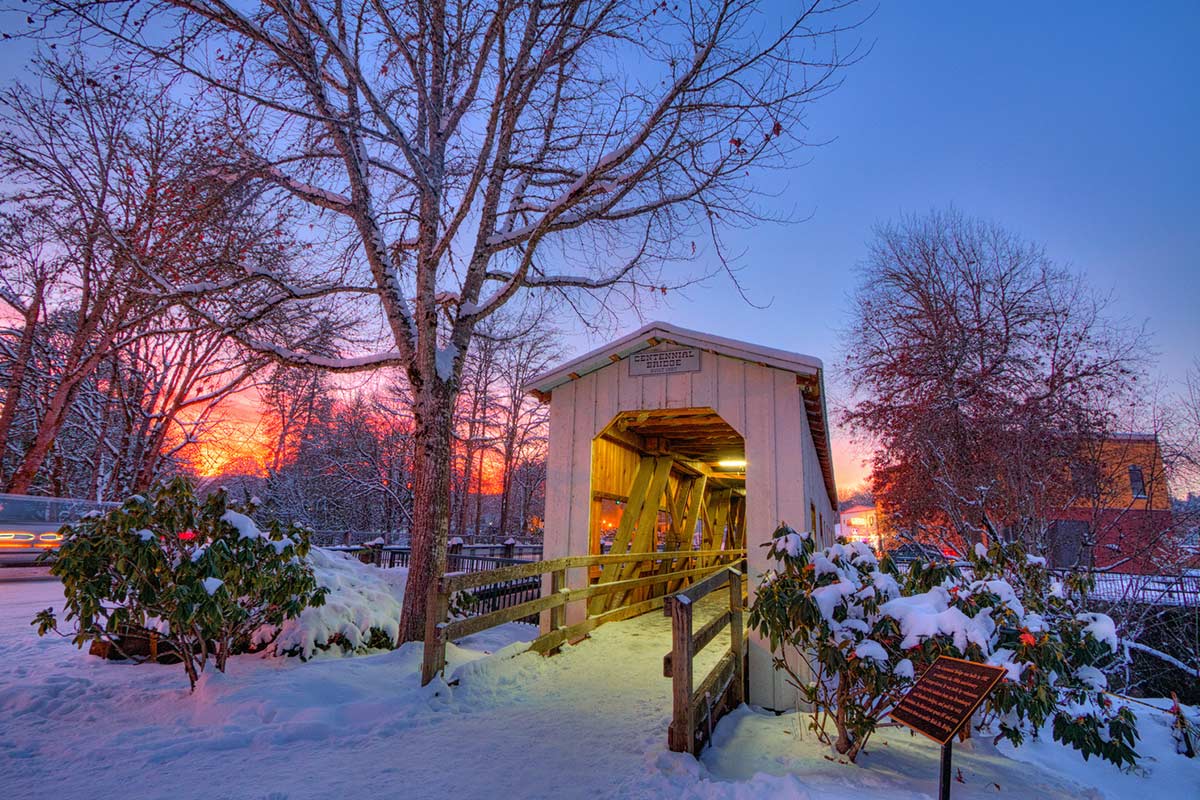
Heritage resources, such as historic cemeteries, museums, and neighborhoods, are often an afterthought in emergency management and resilience planning, explains Robert Parker, the director of strategic and technical solutions for the Institute for Policy Research & Engagement (IPRE).
To address this gap in disaster resilience, IPRE—in partnership with the state historic preservation office, Oregon Heritage, the City of Cottage Grove, and several nonprofits—has developed a community-wide heritage resource disaster plan for the city and a guidebook that can be adopted by other communities. The 76-page book includes guidance for identifying a risk portfolio, strategic planning, creating benchmarks, and celebrating success.
“The guidebook underscores the importance of heritage resources to communities and provides clear guidance on developing strategies to preserve resources before, during, and after disasters,” Parker said.
Oregon Heritage led the project and reached out to IPRE because of their past collaborations, including one that secured federal funding for historic theaters.
Workshops:
Fire Recovery and Community Disaster
Resilience Planning for Historic Cemeteries
1 to 4 p.m., Nov. 17
Register to receive Zoom meeting information.
Disaster Preparedness and Resilience for
Collecting Organizations
9 a.m. to 12:30 p.m., Dec. 2
Register to receive Zoom meeting information.
Disaster Resilience for Main Streets
9 a.m. to 12:30 p.m., Dec. 10
Register to receive Zoom meeting information.
“After working for years with heritage organizations on disaster planning and response, we discovered some challenges,” said Kuri Gill, the Oregon Heritage grants and outreach coordinator. “Remaining focused on disaster planning and preparation when organizations are trying to keep the doors open and the lights on is tough.” Gill notes the project was also funded by the Oregon Cultural Trust.
Beginning Nov. 17, there will be a series of free, online workshops rooted in the guidebook and plan with topics such as “Fire Recovery and Community Disaster Resilience Planning for Historic Cemeteries” and “Disaster Resilience for Main Streets” (see sidebar for more info).
Parker says that the pandemic created urgency for this work, and that the team from IPRE’s Community Planning Workshop (CPW)—an applied planning, public policy, and economic development research program—helped develop resilience plans for several heritage organizations including the Bohemia Gold Mining Museum and the Cottage Grove Genealogical Society. These organizations immediately started implementing the plans, which provided strategies to minimize the impact of disruptions to the mission and services they provide.
“Working on this guidebook has been an amazing opportunity for me as a graduate student,” said Melissa Graciosa, who is in her second year of the Masters in Community and Regional Planning program. “It was so impactful to see how our work could help to support heritage resources throughout the State of Oregon, especially at a time when we're all experiencing the immediate need to adapt to the impacts of COVID-19 and an intense wildfire season. Heritage resources offer so much to communities, telling the story of who we are. It feels ever more pressing to build their resilience as we continue to face change.”
Parker said this project demonstrates the power of university and community partnerships with Oregon Heritage’s commitment to preservation and the CPW providing the capacity to complete the guidebook.
“The project supported the mission of Oregon Heritage, of heritage organizations in Cottage Grove, and provided our graduate students a robust learning platform on emergency management and resiliency in the middle of a global pandemic.”
“We are grateful to IPRE, the City of Cottage Grove, and our nonprofit partners for taking the leap with us,” added Gill. “We know it will support Cottage Grove’s disaster resilience and now there is a guide for other communities to benefit the same way.”
Read more about the project at the Oregon Parks and Recreation Department page. Find the guidebook and other tools at the Oregon Heritage site.
